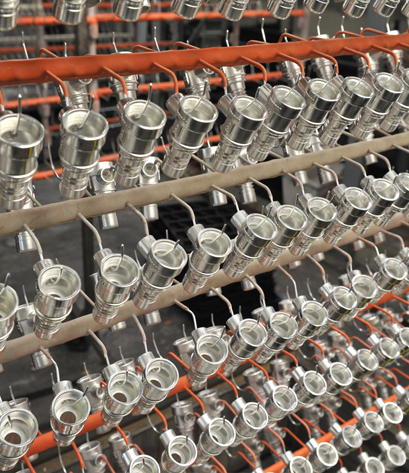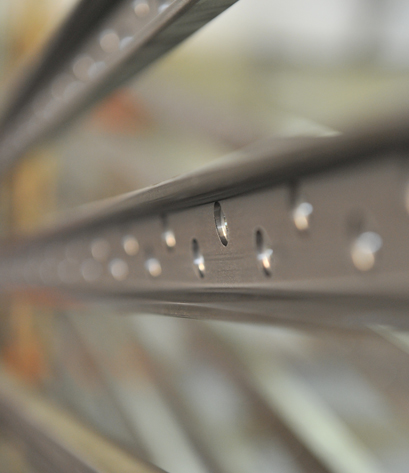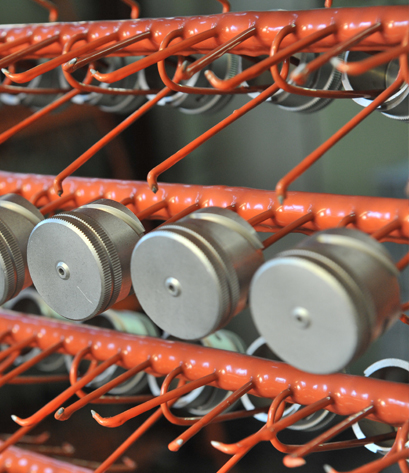The main property about galvanic treatments is the protection against atmospheric corrosion, originated from the electrochemical series of metals. The kind of corrosion that appears between the pairing faces of different metals when there is an electrolyte is known with the term “galvanic corrosion”. It usually affects the less noble metal because it is less electropositive. This hierarchy between different metals is determined by their electrochemical potential. They are classified from the least (less noble) electrodes to the more (more noble) electrodes in the following order:
Electrochemical series of metals
Element E° (volt)
Mg° -2,34
Al° -1,67
Zn° -0,76
Cr° -0,71
Fe° -0,44
Cd° -0,40
Ni° -0,23
Sn° -0,14
Pb° -0,13
Cu° +0,35
Ag° +0,80
Au° +1,42
In the case of iron shielding, if you choose a noble coating, such as iron pond, the protection is solely due to the corrosion resistance of the coating barrier itself, which must be absolutely continuous and free from pores . When for any reason the coating is interrupted so that the underlying metal surface is discolored, at this point a local galvanic element that corrodes the iron more vigorously than without the coating will start acting.



